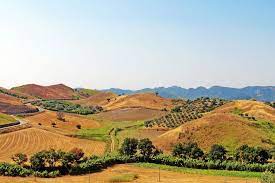
Calabria, located in the "toe" of Italy's boot, is a region with a rich history of viticulture that dates back over 2,500 years. Ancient Greek settlers, who referred to the area as "Oenotria" or "land of wine," introduced grape cultivation to this region. The Mediterranean climate, characterized by warm summers and mild winters, along with diverse landscapes of coastal plains and mountainous terrains, creates an ideal environment for vine growing.
Vineyard Area and Production
As of 2020, Calabria's vineyards spanned approximately 8,824 hectares (21,800 acres), a significant decline from the 30,000 hectares reported in 2010. This reduction reflects broader trends in the region's wine production, which has faced challenges over the years. Despite these challenges, Calabria maintains 12 Denominazione di Origine Controllata (DOC) regions, though only about 4% of its annual production qualifies for DOC status.
Indigenous Grape Varieties
Calabria is renowned for its indigenous grape varieties that contribute to the unique profile of its wines:
-
Gaglioppo: This red grape is the most widely planted in the region, known for producing robust and tannic wines with flavors of red berries and spices.
-
Magliocco Dolce: Another prominent red variety, Magliocco Dolce is valued for its deep color and complex aromas, often used in blends to add depth and structure.
-
Greco Bianco: A notable white grape, Greco Bianco is primarily used in the production of aromatic white wines, including the region's esteemed sweet wines.
These native varieties, cultivated in Calabria's distinctive terroir, produce wines that reflect the region's rich cultural heritage and diverse landscapes.
Read More












